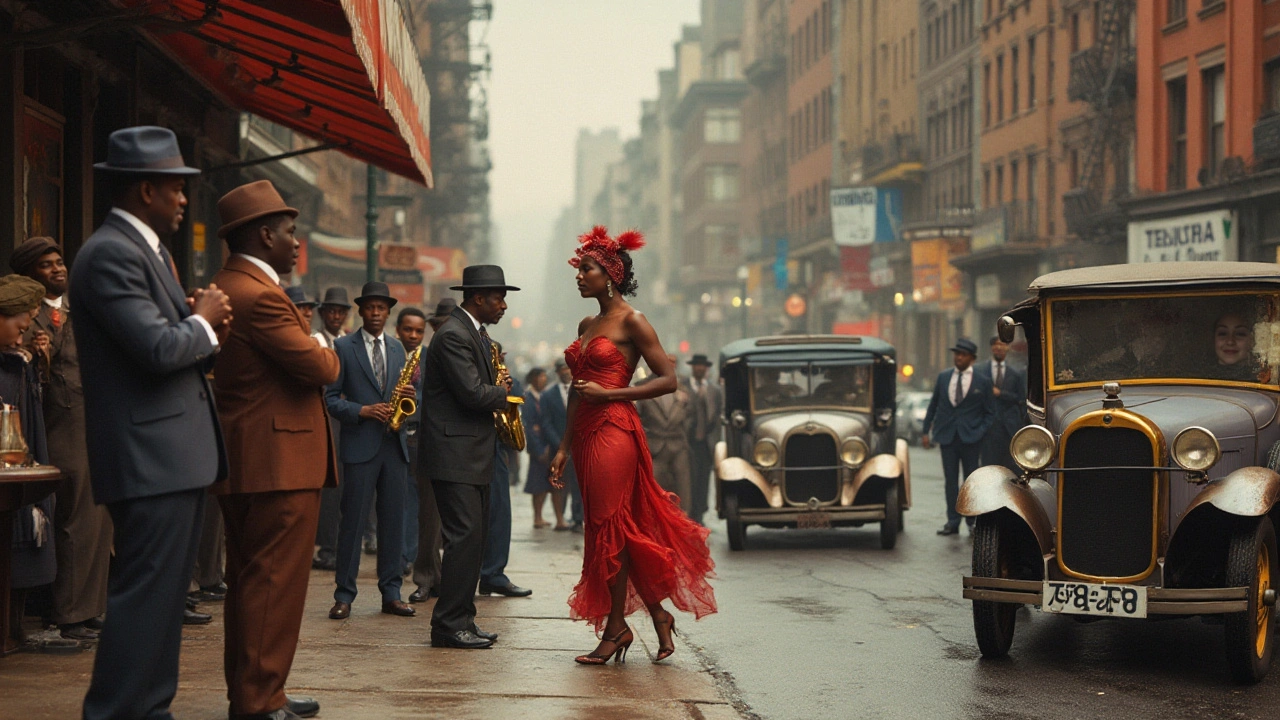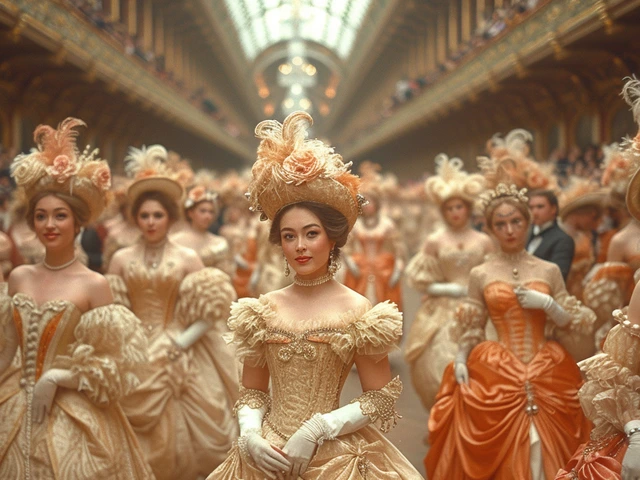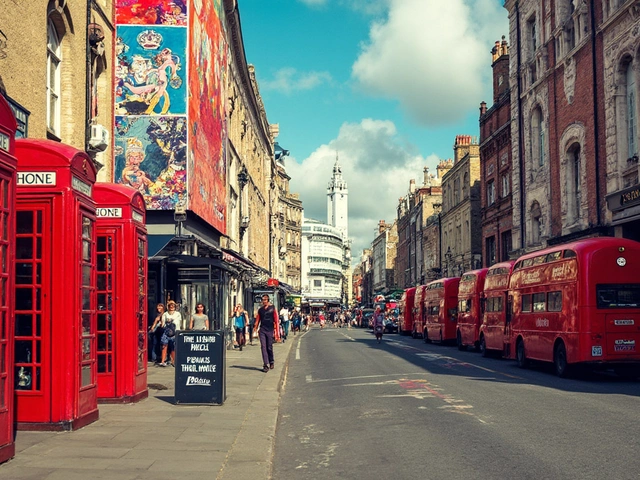The Harlem Renaissance, a pivotal moment in American history, was not just an artistic revolution—it was a cultural odyssey that uplifted the African American community. This movement, blossoming in the heart of Harlem during the early 20th century, signified a radical departure from previous societal norms and opened the door for Black voices to be heard across literature, music, and arts.
This cultural awakening was catalyzed by the Great Migration, which brought numerous African Americans to urban centers, with Harlem becoming a hub of intellectual and artistic activity. Visionaries of this era, including Langston Hughes and Zora Neale Hurston, redefined literature while jazz legends like Duke Ellington and Louis Armstrong transformed music into a communal language of unity and resilience.
The Harlem Renaissance wasn't just an artistic explosion; it was a movement that questioned social constructs and embraced the beauty of diversity. Its influences continue to resonate, offering lessons on the power of cultural representation and artistic freedom.
- Origins and Context
- Key Figures of Influence
- Artistic Expressions and Achievements
- Enduring Legacy and Impact
Origins and Context
The roots of the Harlem Renaissance trace back to the rapid socioeconomic shifts in the early 20th century. Following the conclusion of the Civil War, the Great Migration saw approximately six million African Americans relocate from the rural South to the urban North, driven by the promise of industrial jobs and escape from Jim Crow laws. Harlem, a bustling neighborhood in New York City, emerged as a vibrant epicenter, attracting a rich tapestry of intellectuals, artists, musicians, and writers who aspired to forge a new cultural identity free from the shackles of racial oppression.
Home to a burgeoning Black middle class, Harlem represented hope and opportunity. Its streets brimmed with jazz clubs, speakeasies, and literary salons, becoming fertile ground for innovation and self-expression. This era of rebirth and reconstruction was not solely confined to the arts. It delved into the political arena, marking a shift toward racial consciousness and pride, embodied by Marcus Garvey's call for Black nationalism and self-determination.
The backdrop of the Harlem Renaissance was defined by significant historical events that were shaping the attitudes and outlook of African Americans. World War I had recently ended, and African American soldiers returned with a renewed sense of dignity and a demand for equality. The burgeoning influence of the NAACP and the radical ideologies presented in 'The Crisis,' its renowned magazine, laid the groundwork for conversations about race and justice, seeding the civil rights advancements yet to come.
"Harlem is a dream, a vision, a passion whose earliest shadows were cast by the drums of Africa, whose tragic realities were sustained by the aching melancholia of slavery, and whose final triumph would be measured by the unmatched laughter of free men and women." —James Weldon Johnson
The confluence of talent, ambition, and a shared desire for recognition transformed Harlem into a sanctuary for Black artists navigating the constraints of a segregated society. It fostered a climate where ideas flourished, unshackled by the restrictive norms that had so often stifled African American creativity. Harlem's influence reached far beyond its geographical borders, energizing Black communities throughout the nation, setting the stage for the cultural advancements and social upheavals of the 20th century.
During the 1920s, Harlem's notoriety grew, drawing headline-seekers and talent scouts to its heart. Publications like 'Opportunity: A Journal of Negro Life' and 'The New Negro,' an anthology by Alain Locke, not only propagated the artistic feats of Harlem's denizens but also fueled the burgeoning Black consciousness that sought to dismantle systemic barriers and foster a broader understanding of the African American experience.
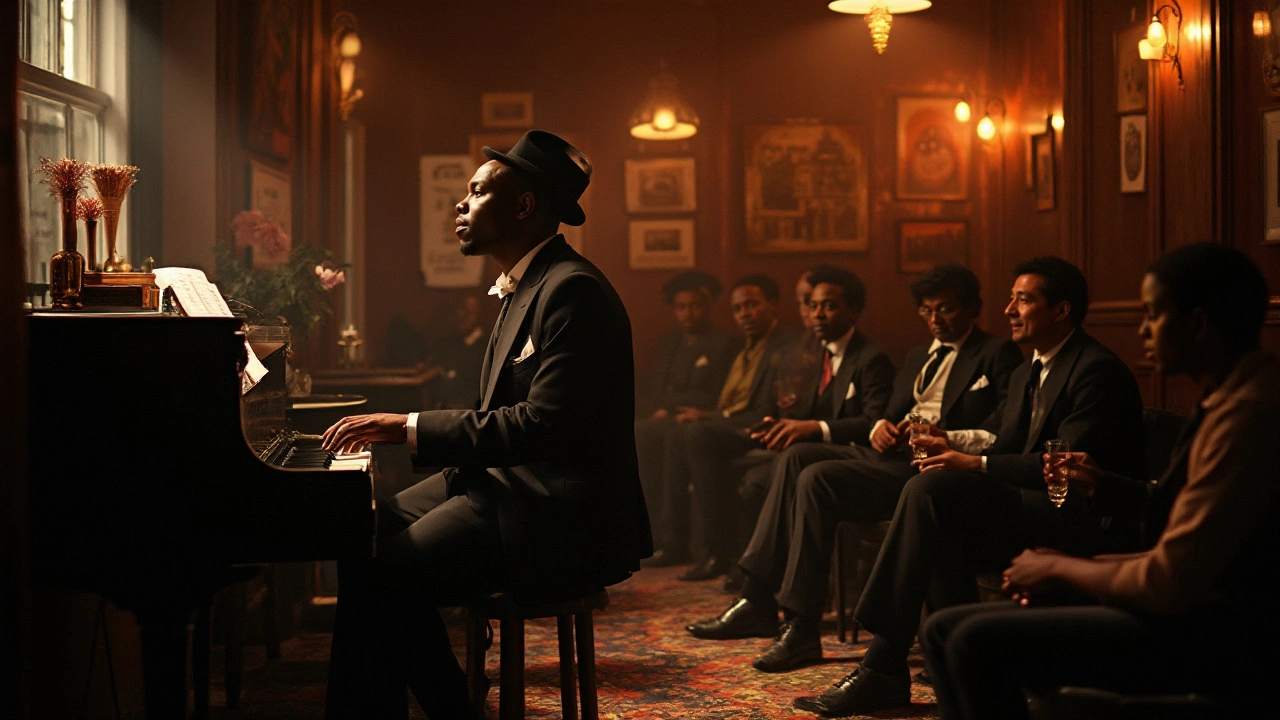
Key Figures of Influence
The Harlem Renaissance was teeming with brilliant minds whose innovative ideas and creations left indelible marks on the cultural landscape. Langston Hughes is often hailed as the voice of this era. Known for his insightful and poignant poetics, Hughes captured the essence of African American life through rhythm and clarity, speaking about both pain and celebration. His work often centered around themes of racial consciousness and pride, urging an embrace of Black heritage and identity. Hughes once said,
"Hold fast to your dreams, for without them life is a broken-winged bird that cannot fly."This quote encapsulates the spirit he infused into his writing.
Another towering figure, Zora Neale Hurston, brought a unique perspective to literature with her anthropological approach. Her novels, especially "Their Eyes Were Watching God," demonstrated the vibrant life and dialect of Southern Blacks. Hurston endeavored to preserve cultural stories through her writing, marrying folk traditions with modern themes, showcasing the richness of African American experiences. Her works are cherished not only for their narrative prowess but for preserving the cultural heritage of the African diaspora.
Meanwhile, in music, the likes of Duke Ellington and Louis Armstrong were revolutionizing the jazz scene. Ellington, whose compositions like "Mood Indigo" and "Sophisticated Lady" are still celebrated today, transformed jazz into an art form of sophistication and innovation. His band played at the famed Cotton Club, a hotspot during the renaissance years. Louis Armstrong, also known as "Satchmo," amazed audiences with his trumpet mastery and unique singing voice. His infectious energy and groundbreaking music, emblematic of the era, helped solidify jazz as a major cultural force.
The visual arts also saw luminary figures, such as Aaron Douglas, whose paintings and murals depicted African themes with striking modernism. He is often described as the "father of African American art," and his work helped to define the aesthetics of the Harlem Renaissance. Douglas's ability to seamlessly blend African motifs with contemporary artistic styles allowed for a new exploration of identity within the artistry of the time. In one of his standout pieces, "Aspects of Negro Life," he depicted the African American journey from the motherland to the urban North, rich in symbolism and depth.
Collectively, these influential figures laid the foundation for cultural and social change. Through their work, the Harlem Renaissance became a beacon of hope and transformation, providing a voice to those yearning for artistic and political recognition. Today, the echoes of their contributions still inspire, reminding us of the power and resilience of cultural expression.
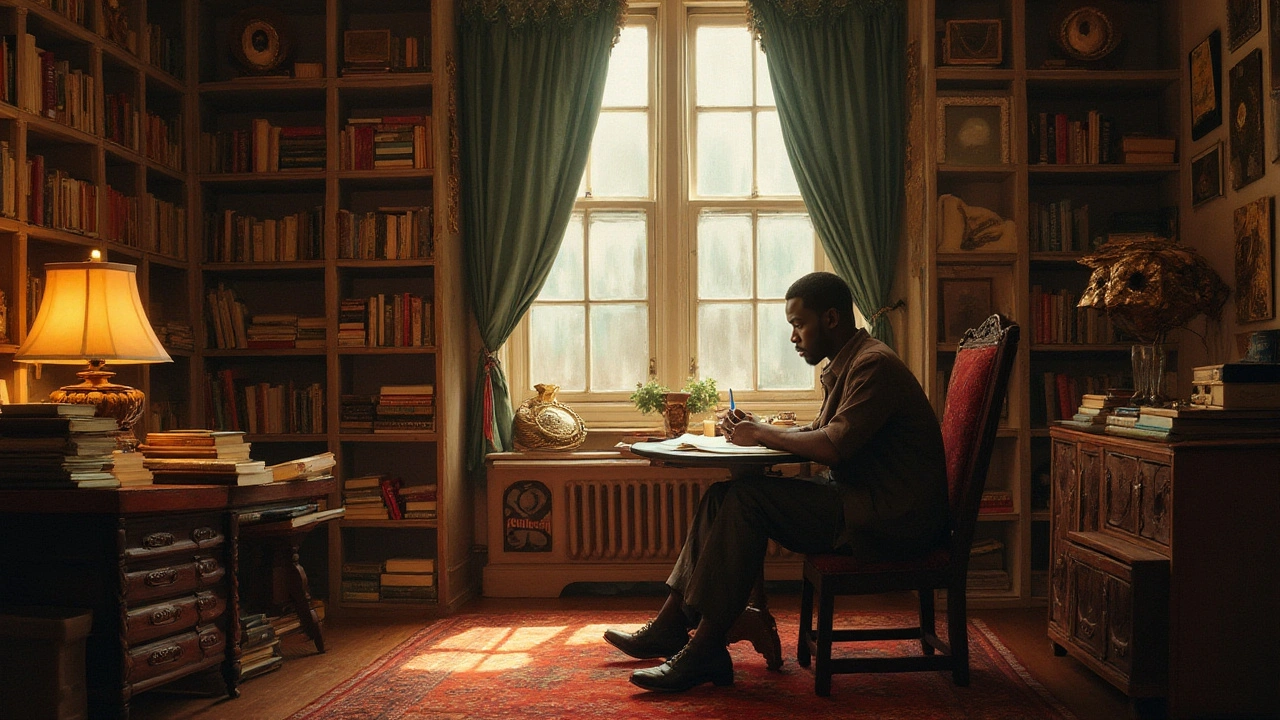
Artistic Expressions and Achievements
The Harlem Renaissance was a vibrant convergence of art forms that redefined the cultural landscape of Black America. During this time, Harlem became a sizzling cauldron of creativity, where artists boldly experimented with music, literature, and visual arts. This movement formed a significant chapter in African American history, as it was a period when Blacks in America began to wear their cultural pride boldly and prominently. From the soulful depth of Blues and Jazz to the charged energy of poetry and literature, the Renaissance brought a mirage of expressions that transcended the racial barriers of the era. Myriad African American artists tapped into themes of racial pride, challenging the preconceived notions of their time. Their work bravely addressed racial injustices while celebrating the rich cultural history and beauty of the African American experience. Langston Hughes, often referred to as the poet laureate of Harlem, once said,
"An artist must be free to choose what he does, certainly, but he must also never be afraid to do what he might choose."His profound words encapsulate the essence of freedom and daring in artistic expression during this epoch.
Music thrived as a universal language during the cultural awakening. Jazz, with its pulsating rhythms, quickly became the sound of Harlem. Musicians such as Duke Ellington and Louis Armstrong brought their innovative sounds to the famed Cotton Club, drawing mixed-race audiences who reveled in the rebellious spontaneity of the music. Meanwhile, the haunting strains of Billie Holiday’s voice etched unforgettable melancholic impressions on her listeners. These artists didn’t just entertain; they also crafted complex, vivid portraits of their life experiences through sound. The impact of this musical revolution was significant as it forged a path for future African American musicians to share their stories worldwide.
In literature and the arts, figures like Zora Neale Hurston and W.E.B. Du Bois broke new ground. Hurston’s distinct narrative voice and anthropological examinations of African American folklore brought a renewed appreciation for Black cultural narratives. Her work played a crucial role in ensuring that these stories were not lost to time. On the other hand, Du Bois, a scholar and activist, used his pen to challenge segregationist policies and urge the African American populace towards unity and progress. His thought-provoking writings laid the intellectual framework that would inspire subsequent Civil Rights movements. Through his articulation of the ‘double-consciousness,’ Du Bois eloquently captured the internal conflicts faced by African Americans, a theme resonant even today.
Visual arts flourished too, adding another dimension to the rich tapestry of the Harlem Renaissance. Artists like Aaron Douglas employed the Art Deco style, creating murals and illustrations that elegantly intertwined African motifs and contemporary styles. His work became emblematic of the period— visually narrating the Black experience through bold, linear compositions. Douglas, dubbed the ‘father of Black American art,’ produced art that boldly celebrated African heritage while also inspiring generations to come. This period in visual arts served as a catalyst for the Harlem community to appreciate visual storytelling and added layers to the narrative fabric of the African American experience.
As we look back, the Harlem Renaissance was more than just an artistic movement; it was a profound cultural revolution. It was a time when Black artists found their voice and the courage to share their stories with the world, influencing countless generations. Today, the artistic fervor of Harlem in the 1920s and 1930s continues to vibrate worldwide. It serves as a testament to the indomitable spirit of African American culture—a legacy that advocates artistic freedom and the power of storytelling. In the context of history, the Renaissance not only highlighted artistic expressions but also paved the way for substantial progress in racial equality.
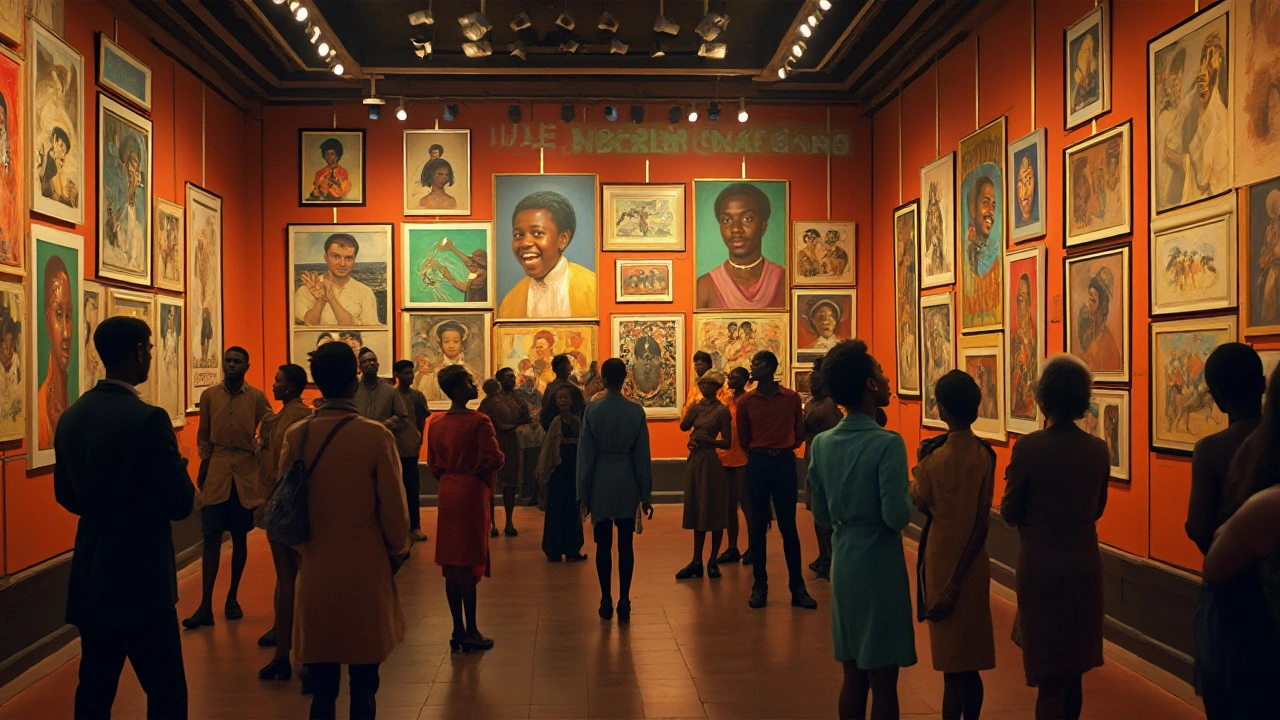
Enduring Legacy and Impact
The Harlem Renaissance was more than just a moment in history; it was a cornerstone that laid the foundation for contemporary African American culture and civil rights. Its influence is still observable today, transcending generations and geographic boundaries to remind us of the strength derived from cultural and artistic enlightenment. The Harlem Renaissance effectively changed the narrative surrounding African American identity, dismantling stereotypes, and replacing them with tales of resilience, talent, and intellectual prowess. The movement inspired future generations to embrace their identity with pride, sparking a wave of social change that reverberated through the decades.
Artists and thinkers of the Harlem Renaissance encouraged African Americans to look back at their rich heritage and celebrate it, fueling a sense of belonging and kinship. This era's artworks and literature became vital symbols of ethnic pride, helping to foster a sense of collective identity. Major figures like Langston Hughes, who celebrated the everyday lives of Blacks, provided a relatable and empowering narrative that remains influential. His words continue to enlighten us today, igniting dialogues around race and identity with his simple yet profound poetry.
Hughes profoundly noted, "An artist must be free to choose what he does, certainly, but he must also never be afraid to do what he might choose."
Not confined to the United States, the impact of the Harlem Renaissance rippled worldwide, influencing movements like Negritude in French-speaking Africa and the Caribbean. It demonstrated the universal power of Black culture as it encouraged people of African descent globally to take pride in their heritage. Jazz and blues, two musical genres that flourished during this time, have become permanent fixtures in world music, constantly evolving while retaining their roots in the resilience and soul of the African American experience.
Importantly, the Renaissance laid the groundwork for the Civil Rights Movement of the 1960s, advocating for social and political equality. It compelled future activists to continue the fight for justice and equality long after the Renaissance itself had passed. These enduring influences, combined with the vibrant celebration of Black culture it fostered, suggest that the Renaissance's significance is both historical and deeply current.
Even in schools across the globe, the study of the Harlem Renaissance allows a deeper understanding of American history, promoting discussions about racial equality and cultural appreciation. In conclusion, this cultural awakening offered stepping stones towards a society that values diversity, serving as a timeless reminder of how art, culture, and community can help pave the way for significant change and understanding across whatever divides us.

